What is SIDS?
SIDS is the sudden, unexplained death of a baby under one year of age. While the exact cause of SIDS is unknown, it is believed to be related to an underlying health condition or breathing problem.
There are several factors that can increase the risk of SIDS, including:
- Sleeping on the stomach or side
- Overheating
- Exposure to smoke
- Premature birth or low birth weight
- Family history of SIDS
- Lack of prenatal care
- How can CPR help in an emergency?
Babies are at a higher risk of SIDS if they have their heads covered, and unnecessary items such as soft toys, cot bumpers and pillows can increase the risk of head covering or lead to an accident.
- An empty cot is a safe cot.
- Baby should always be placed to sleep on their back.
- Baby’s sleep space should be breathable and not fully enclosed as this can lead to suffocation – take cot bumpers, pillows and decorative items out when placing baby to sleep.
In the event of an emergency, CPR can be a life-saving technique. CPR, or cardiopulmonary resuscitation, involves performing chest compressions and rescue breathing to help maintain blood flow and oxygen to the brain and other vital organs. For a baby, the technique is slightly different than for adults, so it’s important to learn proper infant CPR techniques.
Learning CPR can give you the knowledge and confidence to respond in an emergency situation. By performing CPR, you can help stabilize your baby until medical professionals arrive.
How can you reduce the risk of SIDS?
While there is no guaranteed way to prevent SIDS, there are several steps you can take to reduce the risk. Some of these steps include:
- Always placing your baby on their back to sleep
- Using a firm, flat sleep surface without any soft objects or loose bedding
- Keeping your baby’s sleeping area in the same room as you for the first six months of life
- Avoiding exposure to smoke
- Breastfeeding your baby, if possible
- Using a pacifier during sleep
- Providing tummy time during awake hours
- In addition to these steps, learning CPR can be a valuable tool in reducing the risk of SIDS. By being prepared for an emergency, you can respond quickly and confidently in a crisis.
In conclusion, SIDS is a devastating tragedy that no parent wants to imagine. But by taking steps to reduce the risk of SIDS and learning CPR, you can be better prepared for an emergency situation. Don’t wait until it’s too late – learn CPR today and take steps to keep your baby safe.
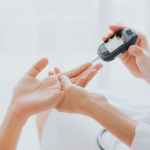
Managing a Diabetic Emergency
A quiet coffee break turned critical in seconds.Trauma nurse Catherine Rodwell shares how quick action—and a teaspoon of syrup—helped save a life during a sudden diabetic emergency. Whether you’re a parent, teacher, or just someone who wants to be prepared, this story is a powerful reminder of why first aid
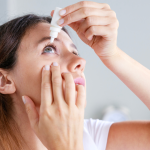
Clear Vision: Eye-Injury Emergency Steps
Your eyes are delicate and exposed, making them especially vulnerable to sudden injuries — whether from chemical splashes or small foreign objects like dust, metal shavings, or wood splinters. Knowing how to respond quickly and correctly can protect vision, reduce damage, and prevent long-term complications. Here’s a simple guide to

Strap In for Safety: Master Baby Car Seat Use
A correctly installed car seat is your child’s first line of defense on the road. Every year, misuse or poor installation contributes to preventable injuries during vehicle accidents. In this guide, we’ll cover the essentials of choosing, installing, and adjusting your baby’s car seat — so you can drive with
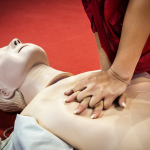
Why Everyone Should Learn CPR
In an emergency, the actions you take in the first few minutes can mean the difference between life and death. Cardiopulmonary resuscitation (CPR) is one of the simplest and most effective ways to help save a life — and yet, many people still don’t feel confident enough to use it

Who & When to Call Emergency Services
In an emergency, every second counts — but knowing when to call for help can make all the difference. Whether it’s a medical crisis, accident, or unexpected health scare, many people hesitate or second-guess themselves in the moment. That delay can be dangerous. The truth is, it’s better to call
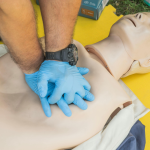
Top 5 CPR Myths Debunked!
When it comes to CPR (Cardiopulmonary Resuscitation), misinformation is everywhere. These myths can prevent people from stepping in to help when every second counts. At Survival CPR, we believe knowledge is power—and in this case, it could be life-saving. Separate fact from fiction and empower yourself to act confidently
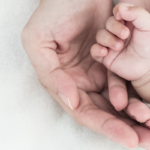
About
Welcome Founded in 2001 by Sister Catherine Rodwell, a seasoned trauma and ICU expert with extensive experience in medical evacuations across Africa, Survival® CPR is dedicated to empowering individuals with life-saving skills. Her mission is to equip parents, nannies, childminders, teachers, and employees with the knowledge and skills to respond

Scholars CPR and First Aid Course
Scholars CPR and First Aid Course Children can save lives! Our Scholars CPR and First Aid Course is tailor-made for young children from the age of 9 to 18. This vital course will enable young and older children to know how to handle an accident or emergency involving children and
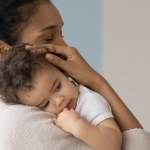
Baby and Child CPR and First Aid Course
Baby & Child CPR and First Aid Course Our Baby and Child CPR and First Aid Course is tailor-made for parents. This vital course will teach a parent how to handle an accident or emergency involving babies and children. You will learn how to handle all First Aid emergencies as


